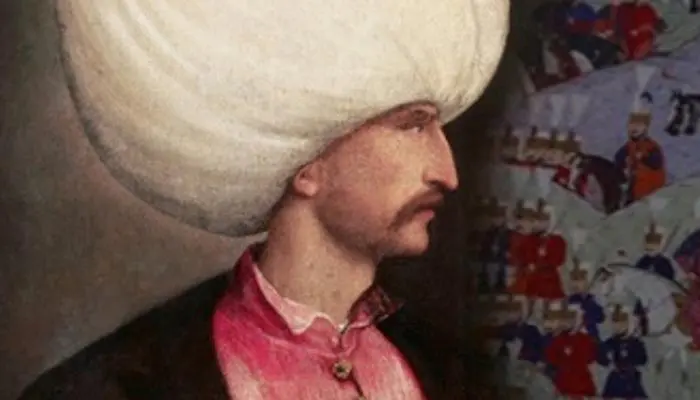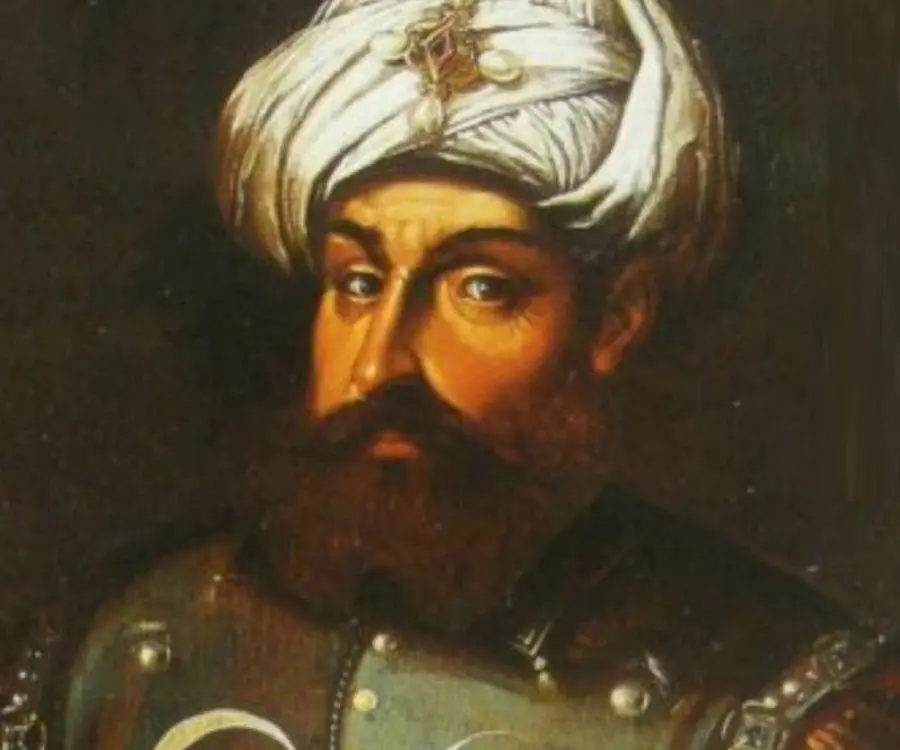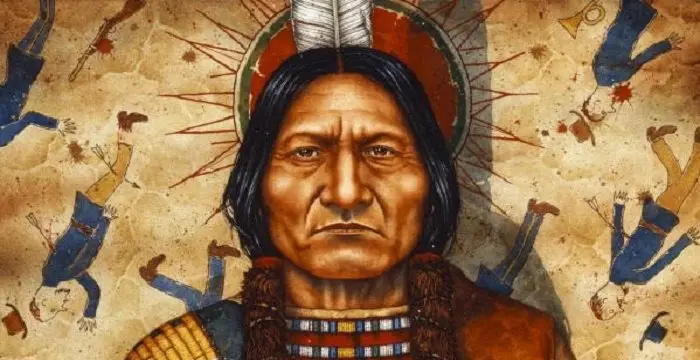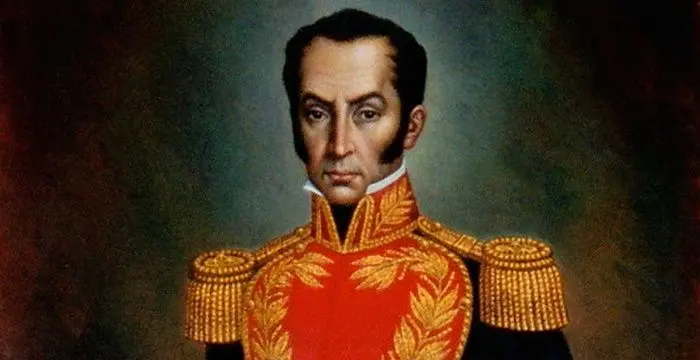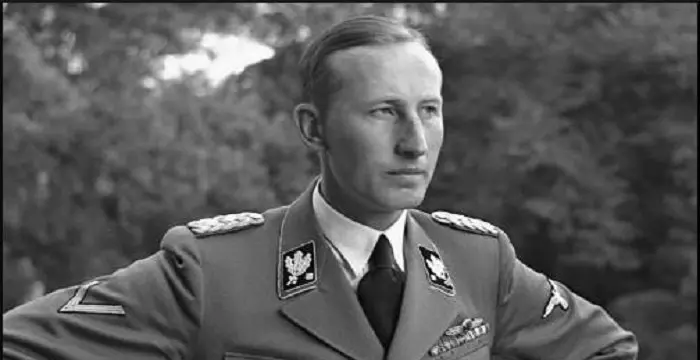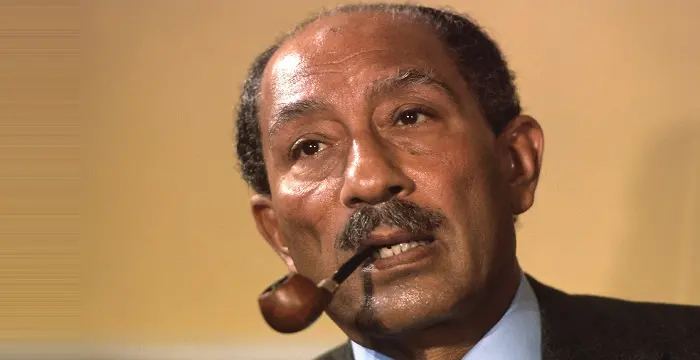
Hayreddin Barbarossa - Turkish Men, Timeline and Family
Hayreddin Barbarossa's Personal Details
Hayreddin Barbarossa was one of the most successful naval commanders of the Ottoman Empire in the 16th century
| Information | Detail |
|---|---|
| Birthday | 1478 |
| Died on | July 4, 1546 |
| Nationality | Turkish |
| Famous | Leaders, Military Leaders, 16th Century Naval Commander, Turkish Men |
| Nick names | Barbarossa (Red Beard) |
| Siblings | Ilyas bin Yaqoob, Ishak bin Yaqoob, Oruç Reis |
| Known as | Khizr or Khidr |
| Childrens | Hasan Pasha |
| Birth Place | Ottoman Empire |
| Gender | Male |
| Father | Yakup Ağa |
| Mother | Katerina |
| Born in | Ottoman Empire |
| Famous as | 16th Century Naval Commander |
| Died at Age | 68 |
// Famous Turkish Men
Suleiman The Magnificent
Suleiman I, commonly known as Suleiman the Magnificent, was the tenth and longest-reigning sultan of the Ottoman Empire. This biography profiles his childhood, life, administration, empire, achievements, timeline and highlights some fun facts.
Rumi
Rumi, a 13th century Persian poet and Sufi mystic, has worldwide recognition. Read this biography to explore his life, childhood & timeline.
St Paul
St Paul is one of the greatest contributors to Christianity. Go through this biography, to know more about the life and childhood of Saint Paul.
Hayreddin Barbarossa's photo
Who is Hayreddin Barbarossa?
Hayreddin Barbarossa was one of the most successful naval commanders of the Ottoman Empire in the 16th century. Born Khizr, he later gained the title of “Hayreddin,” meaning “Goodness,” and “Barbarossa,” or “Red beard.” He is known in history for defeating the combined forces of Spain, the Holy Roman Empire, and the Republic of Venice in the battle of Preveza that established the supremacy of the Ottoman Empire in the Mediterranean region. From helping his father with trading over sea routes, to resorting to piracy to counter the ‘Knights of St. John,’ Barbarossa proved himself to be one of the best naval commanders of his time. He established a loyal force by providing safe passage for Muslim Mudéjars, from Spain to North Africa. He gained the support of the Sultan of the Ottoman Empire and developed diplomatic relations with the French to fight against the Italians and the Spaniards who threatened his forces. Charles V of Spain tried to lure him with the lordship of North Africa, but Barbarossa did not fall prey to the bait. After his retirement, he appointed his son, Hasan Pasha, as the ruler of Algiers and spent the rest of his time contributing to his memoirs that remain displayed at the ‘Istanbul University Library’ to this day.
Childhood & Early Life
Hayreddin Barbarossa was born Khizr, in 1478, on the island of Lesbos in the Ottoman Empire, which is now part of Greece. His father, Yakup Ağa, was a Turkish cavalry soldier of Albanian origin, and his mother was an Orthodox Christian named Katerina and the widow of a Greek Orthodox priest.
He had three brothers and two sisters. He and his brothers helped their father run a pottery business after he retired from the army. All four brothers grew up to become seamen on international trade routes. From trading, the brothers soon turned to privateering on the Mediterranean Sea in order to counter the ‘Knights Hospitaller.’
His brother Ilyas was killed by the ‘Knights of St. John,’ and another of his brothers, Oruç, was taken prisoner and held at the ‘Knight’s castle in Bodrum, till he was rescued by Khizr. Oruç later gained the support of the Ottoman prince and was given 18 galleys to fight against the ‘Knights of St. John,’ who were disrupting the Ottoman trade routes.
Career
Khizr joined his brother Oruç and went to Egypt, following the exile of the Ottoman prince who had given them his support. They were given more ships and made responsible for operations against Italy and the islands in the Mediterranean Sea.
In 1503, the brothers made the island of Djerba their base and operated in the Western Mediterranean Sea. The following year, they made an agreement with the Sultan of Tunisia and gained the use of the strategic port of La Goulette.
They soon became famous for their exploits, which were eventually shared with the Sultan. These included a Sicilian warship with 380 Spanish soldiers and 60 Spanish knights on board, who were on their way from Spain to Naples. The third brother, Ishak, also joined forces at La Goulette.
They were joined by other Muslim corsairs, with whom they raided the coast of Liguria. From 1504 to 1510, they were instrumental in providing safe passage and transportation for Muslim Mudéjars, from Spain to North Africa. The role played by Oruç in providing assistance to Muslims earned him the title of “Baba,” which later got converted to “Barbarossa.”
Between 1510 and 1512, they raided Cape Passero in Sicily and Reggio Calabria in southern Italy. They were subsequently invited by the exiled ruler of Bougie to drive out the Spaniards. Simultaneously, they built more ships and established a gunpowder manufacturing establishment at La Goulette.
Having established their might in the region, they captured four English ships on their way to France and several other Spanish vessels, too. In 1514, their forces destroyed two Spanish fortresses in Bougie. They then raided the cities of Ceuta and Jijel.
They captured Jijel in 1516 and drove out the Spaniards and Abu Hamo Musa III of the Beni Ziyad dynasty, to establish their own rule over Algeria. A year later, they joined the Ottoman Empire in order to seek protection from the Spaniards who were seeking revenge. Thus, Algeria became a province of the Ottoman Empire, with Oruç as its ruler.
In May 1518, Oruç and Ishak were killed in the battle for Tlemcen, against the forces of Emperor Charles V of Spain, and Khizr was made “Beylerbey” by Sultan Selim I. Khizr inherited his brother’s title, “Barbarossa,” too.
Hayreddin Barbarossa recaptured Tlemcen by the end of 1518 and built up a sizable loyal army by transporting Mudéjars from Spain to North Africa. He defeated the Spanish army that attempted to recapture Algeria and sank several of their ships.
He assisted the Ottoman Empire to capture Rhodes and drive out the ‘Knights of St. John’ from the region in 1523. From 1525 to 1527, he raided many ports and castles on the coast of Italy and Spain, including Crotone, Castignano, and Messina.
He was successful in repulsing the attack of Andrea Doria, who was sent by Charles V to recapture Jijel in 1531. Sultan Suleiman realized the value of a strong naval commander and appointed Barbarossa as the “Grand Admiral” of the ‘Ottoman Navy.’ He was also given the province of Rhodes and islands of Euboea and Chios to rule.
Barbarossa understood the importance of France and made peace with King Francis I by exchanging ambassadors and establishing embassies in 1533. He then combined forces with France to attack the Duke of Savoy and the Genoese province.
Having achieved success, he went on to recapture Patras, Coron, and Lepanto from the Spaniards by mid-1534. He then crossed the Strait of Messina, attacked the Calabrian coast, and destroyed ships harbored at the port of Cetraro. His exploits took him to the Gulf of Naples and the Tiber, threatening Rome.
The Spanish and Italian forces combined to fight Barbarossa to recapture Tunis. Barbarossa abandoned Tunis before his enemies could reach him and then sailed to Capri, where he constructed a fort that stands to this day. He then sailed back to Algiers and repulsed another Spanish attack on Tlemcen.
In 1536, he was made the commander of 200 ships that attacked the Habsburg Kingdom of Naples. The following year, he led the Ottoman forces that captured the Ionian Islands, which were part of the Republic of Venice.
He defeated the combined forces of Spain, the Holy Roman Empire, and the Republic of Venice in the battle of Preveza in September 1538 and established the supremacy of the Ottoman Empire over the Mediterranean region.
Major Works
His memoirs remain displayed at the ‘Istanbul University Library.’
Awards & Achievements
He was given the top-most honors of the Ottoman Empire and the right to sit on the Imperial Council.
Personal Life
Barbarossa retired in 1545 and appointed his son, Hasan Pasha, as his successor. He then dictated his memoirs to Muradi Sinan Reis. The hand-written memoirs, known as the ‘Conquests of Hayreddin Pasha,’ are displayed at the ‘Istanbul University Library’ to this day.
He died in 1546 at the palace of Büyükdere, close to Istanbul. His mausoleum is located at the ‘Barbaros Park’ in Istanbul, near the ‘Istanbul Naval Museum,’ where his statue stands.
Trivia
Charles V once sent an agent to offer Barbarossa the lordship of North Africa to gain his loyalty. The agent was also instructed to kill Barbarossa if he did not accept the offer. Barbarossa decapitated the agent with his scimitar before he could make his move.
// Famous Military Leaders
Sitting Bull
Sitting Bull was a Teton Dakota Indian chief who led Sioux tribes in their struggle for survival on the North American Great Plains.
Simon Bolivar
Simón Bolívar was a Venezuelan military leader who was instrumental in independence of several Latin American countries from the Spanish rule. This biography profiles his childhood, life, achievements and timeline.
Reinhard Heydrich
Reinhard Heydrich was a high-ranking German Nazi official during the World War II. Check out this biography to know about his childhood, family life, achievements and other facts about his life.
Hayreddin Barbarossa biography timelines
- // 1478Hayreddin Barbarossa was born Khizr, in 1478, on the island of Lesbos in the Ottoman Empire, which is now part of Greece. His father, Yakup Ağa, was a Turkish cavalry soldier of Albanian origin, and his mother was an Orthodox Christian named Katerina and the widow of a Greek Orthodox priest.
- // 1503In 1503, the brothers made the island of Djerba their base and operated in the Western Mediterranean Sea. The following year, they made an agreement with the Sultan of Tunisia and gained the use of the strategic port of La Goulette.
- // 1504 To 1510They were joined by other Muslim corsairs, with whom they raided the coast of Liguria. From 1504 to 1510, they were instrumental in providing safe passage and transportation for Muslim Mudéjars, from Spain to North Africa. The role played by Oruç in providing assistance to Muslims earned him the title of “Baba,” which later got converted to “Barbarossa.”
- // 1510 To 1512Between 1510 and 1512, they raided Cape Passero in Sicily and Reggio Calabria in southern Italy. They were subsequently invited by the exiled ruler of Bougie to drive out the Spaniards. Simultaneously, they built more ships and established a gunpowder manufacturing establishment at La Goulette.
- // 1514Having established their might in the region, they captured four English ships on their way to France and several other Spanish vessels, too. In 1514, their forces destroyed two Spanish fortresses in Bougie. They then raided the cities of Ceuta and Jijel.
- // 1516They captured Jijel in 1516 and drove out the Spaniards and Abu Hamo Musa III of the Beni Ziyad dynasty, to establish their own rule over Algeria. A year later, they joined the Ottoman Empire in order to seek protection from the Spaniards who were seeking revenge. Thus, Algeria became a province of the Ottoman Empire, with Oruç as its ruler.
- // 1518Hayreddin Barbarossa recaptured Tlemcen by the end of 1518 and built up a sizable loyal army by transporting Mudéjars from Spain to North Africa. He defeated the Spanish army that attempted to recapture Algeria and sank several of their ships.
- // May 1518In May 1518, Oruç and Ishak were killed in the battle for Tlemcen, against the forces of Emperor Charles V of Spain, and Khizr was made “Beylerbey” by Sultan Selim I. Khizr inherited his brother’s title, “Barbarossa,” too.
- // 1531He was successful in repulsing the attack of Andrea Doria, who was sent by Charles V to recapture Jijel in 1531. Sultan Suleiman realized the value of a strong naval commander and appointed Barbarossa as the “Grand Admiral” of the ‘Ottoman Navy.’ He was also given the province of Rhodes and islands of Euboea and Chios to rule.
- // 1533Barbarossa understood the importance of France and made peace with King Francis I by exchanging ambassadors and establishing embassies in 1533. He then combined forces with France to attack the Duke of Savoy and the Genoese province.
- // 1534Having achieved success, he went on to recapture Patras, Coron, and Lepanto from the Spaniards by mid-1534. He then crossed the Strait of Messina, attacked the Calabrian coast, and destroyed ships harbored at the port of Cetraro. His exploits took him to the Gulf of Naples and the Tiber, threatening Rome.
- // 1536In 1536, he was made the commander of 200 ships that attacked the Habsburg Kingdom of Naples. The following year, he led the Ottoman forces that captured the Ionian Islands, which were part of the Republic of Venice.
- // Sep 1538He defeated the combined forces of Spain, the Holy Roman Empire, and the Republic of Venice in the battle of Preveza in September 1538 and established the supremacy of the Ottoman Empire over the Mediterranean region.
- // 1545Barbarossa retired in 1545 and appointed his son, Hasan Pasha, as his successor. He then dictated his memoirs to Muradi Sinan Reis. The hand-written memoirs, known as the ‘Conquests of Hayreddin Pasha,’ are displayed at the ‘Istanbul University Library’ to this day.
- // 1546He died in 1546 at the palace of Büyükdere, close to Istanbul. His mausoleum is located at the ‘Barbaros Park’ in Istanbul, near the ‘Istanbul Naval Museum,’ where his statue stands.
// Famous Leaders
Edi Rama
Edi Rama is the current Prime Minister of Albania. Check out this biography to know about his childhood, life, achievements, works & timeline.
Tecumseh
Tecumseh was a Native American leader of the Shawnee clan. This biography profiles his childhood, life and timeline.
Khalifa bin Zayed Al Nahyan
Sheikh Khalifa bin Zayed Al Nahyan is the current President of the United Arab Emirates (UAE). Check out this biography to know about his birthday, childhood, family life, achievements and fun facts about him.
Anwar Sadat
Anwar Sadat was the third President of Egypt and has been awarded the Nobel Prize for his peace initiatives. To know more about his childhood, career, profile and timeline read on the following biography.
Leo Varadkar
Cam Leo Varadkar is the current Taoiseach—the Prime Minister—of the Republic of Ireland. Check out this biography to know about his childhood, family life, achievements and other facts about his life.
Swami Vivekananda
Swami Vivekananda was the chief disciple of Sri Ramakrishna, and was responsible for awakening India spiritually. Check this biography to know in detail about his life, profile and timeline.
Hayreddin Barbarossa's FAQ
When was Hayreddin Barbarossa died?
Hayreddin Barbarossa was died at 1546-07-04
Which age was Hayreddin Barbarossa died?
Hayreddin Barbarossa was died at age 68
Where is Hayreddin Barbarossa's birth place?
Hayreddin Barbarossa was born in Ottoman Empire
What is Hayreddin Barbarossa nationalities?
Hayreddin Barbarossa's nationalities is Turkish
What is Hayreddin Barbarossa nick names?
Hayreddin Barbarossa's nickNames is Barbarossa (Red Beard)
Who is Hayreddin Barbarossa siblings?
Hayreddin Barbarossa's siblings is Ilyas bin Yaqoob, Ishak bin Yaqoob, Oruç Reis
Who is Hayreddin Barbarossa childrens?
Hayreddin Barbarossa's childrens is Hasan Pasha
Who is Hayreddin Barbarossa's father?
Hayreddin Barbarossa's father is Yakup Ağa
Who is Hayreddin Barbarossa's mother?
Hayreddin Barbarossa's mother is Katerina
How famous is Hayreddin Barbarossa?
Hayreddin Barbarossa is famouse as 16th Century Naval Commander
